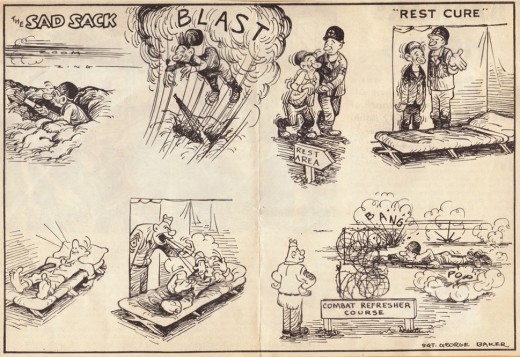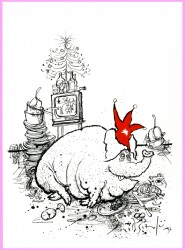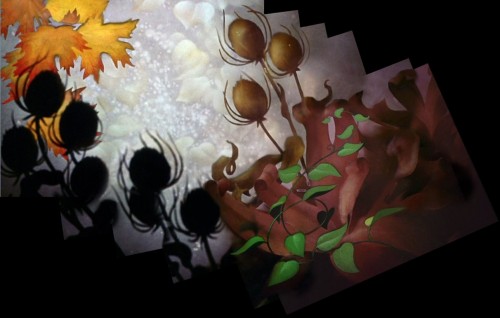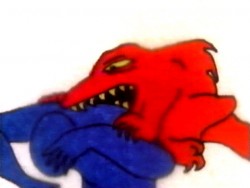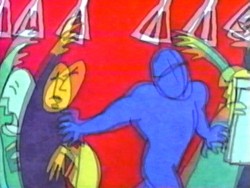Category ArchiveSpornFilms
SpornFilms 10 Nov 2007 08:54 am
An opening and Thanks Part II
Program I: Last night, Friday, was the start of the MOMA series. Heidi Stallings, Matt Clinton and I met up with Josh Siegel of the Museum in the lobby. Heidi and Matt left to grab seats while Josh and I stood in the rear waiting for the start. He’d introduce me and I’d said hello. We also decided that I answer a Q&A at the end.
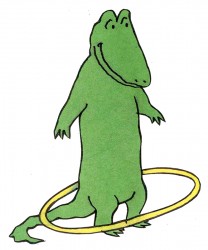 The audience was close to full – I saw a few empty seats. From the animation community I saw a handful of people (at least, of those I knew). They were all people who had worked with me in getting the films made. Masako Kanayama, Ray Kosarin, Patty Stren, John Canemaker. This sort of pleased me in that there was a big audience of people who didn’t know me or the films. They were interested.
The audience was close to full – I saw a few empty seats. From the animation community I saw a handful of people (at least, of those I knew). They were all people who had worked with me in getting the films made. Masako Kanayama, Ray Kosarin, Patty Stren, John Canemaker. This sort of pleased me in that there was a big audience of people who didn’t know me or the films. They were interested.
After the opening pleasantries, the show started with Mona Mon Amour. This is a film that I always thought was funny. But in the few screenings I’ve seen of it, the audience of animators didn’t even sound like they were even smiling. It always confused me. Well, this screening got big laughs. It really made me perk up. I’m glad Patty and here husband were there to hear them laugh with her film. Champagne was politely quiet, as the audience stayed involved in this difficult film. It’s always been a tad heavyhanded for me, and it was so again last night. The Man Who Walked Between The Towers was the best received. The audience was completely into it. They laughed when they should have, and gasped when I didn’t realize it was coming. Lyle Lyle Crocodile looked beautiful. The music score seemed a touch loud, but it worked well with the stereo screening. How off character the characters are for so much of the film, but it somehow works. The film was pleasant to see again. The Little Match Girl was a completely different film than the one I remembered. It’s a long story, but the film went through a long hard making, and I removed myself from it after completing it in 1990. Many of the voices were those of animators, and it was great hearing them again. Theresa Smythe did an absolutely brilliant job as Angela, and she got a lot of laughs. The film moved slowly for me and was the most problematic, but it looked great, and I was glad to have seen it again.
The Q&A afterward was about 15 mins. long and the audience asked good questions. One woman asked if creativity had changed over the 26 years in the history of my studio. I answered that the creativity came from within me and the people who worked with me, so it hadn’t really changed because of time but had because of influences and finances.
All in all it was a great evening for me. I had a lot of fun. A fine start.
Program II:Fables at the Museum of Modern Art will be screened today at 3:30PM and tomorrow at 2:45. The films to be screened include: Doctor DeSoto, Abel’s Island, The Red Shoes and The Hunting of the Snark.
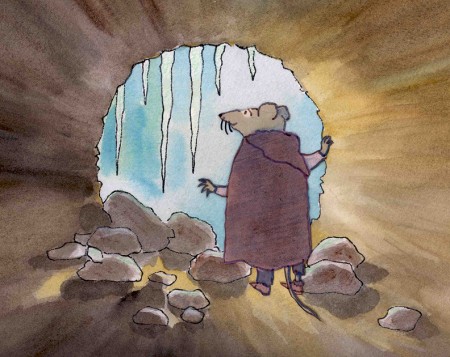
Abel witnesses the first thaw of the season in Abel’s Island.
I’d like to take this moment to thank all the artists who were involved in the production of these films. I couldn’t have made these films as beautifully without their help. They include:
__________Isabella Bannerman ______Betsy Bauer ______Gary Becker
__________Charlotte Booth__________Laura Bryson______Mark Bykov
__________Diana Sara Cherkas______Devon Collins______Doug Compton
__________Lisa Crafts______________Tim Curry________ Arthur Custer
__________Tissa David_____________Ossie Davis_______ John R. Dilworth
__________Steven Dovas___________Daniel Esterman___ Madeline Fan
__________Wolf Ferro______________Maxine Fisher______Kathryn Gradner
__________Simi Gulati_____________ Kit Hawkins_______ Matthew Jacobson
__________Lionel Jeffries___________James Earl Jones___ Perry Kiefer
__________Carol Kilbanks__________Sophie Kittredge____Ray Kosarin
__________Terry Waxman Koshel____Sono Kuwayama____Stephen MacQuignon
__________Robert Marianetti________Mark Mayerson_____George McClements
__________Jason McDonald_________Giuliana Nicodemi___Christine O’Neill
__________Edwin O’Neill___________ Gregory Perler_____.Thomas Repasky
__________Caleb Sampson_________Morton Schindel_____Elizabeth Seidman
__________Theresa Smythe________ Heidi Stallings______William Steig
__________Bridget Thorne__________Mary Thorne_______ Ernest Troost
__________Larry White____________Michael Wisniewski
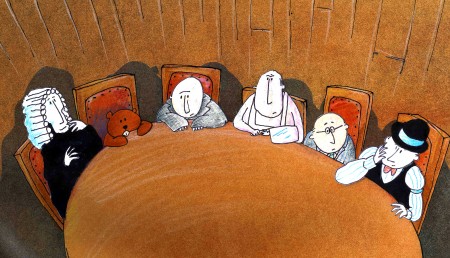
The crew listens to the Bellman speak in The Hunting of the Snark.
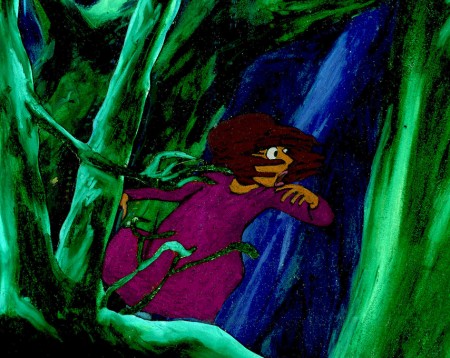
A dance in the deep dark woods with non-stop dancing red shoes.
___=(Click any image to enlarge.)
Program III: A Peaceable Kingdom will screen today at 5:30 and tomorrow at 4:45. I’ll focus on it tomorrow.
SpornFilms 09 Nov 2007 08:51 am
Thanks Part I
For the weekend, I’d like to take some space to thank the many people that worked on the films being screened at the Museum of Modern Art. It’s great to have this venue to get the thanks out there.
Program I:New York Stories will screen today at 6:30PM and tomorrow at 1:30PM.
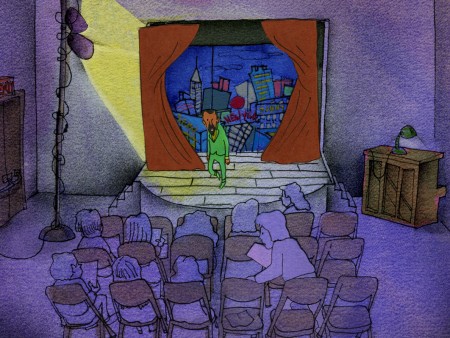
The opening scene from The Little Match Girl
Many thanks and huzzahs to the following people who worked on the films in this program: Mona Mon Amour, Champagne, The Man Who Walked Between The Towers, Lyle Lyle Crocodile and The Little Match Girl
______F. Murray Abraham______Lew Achenbach______Ed Askinazi
______Michael Bacon__________Gary Becker________ Bob Bushell
______Paul Carrillo___________.Matthew Clinton______Leigh Corra
______Tissa David____________John R. Dilworth______Steven Dovas
______Natalia Elina___________.Daniel Esterman_____.Madeline Fan
______Ray Feldman___________Maxine Fisher________Paul Gagne
______Julie Garton____________Mordicai Gerstein_____Krista Grasso
______Jake Gyllenhaal_________Donald Harrison______Masako Kanayama
______Perry Kiefer____________Bruce Knapp_________Ray Kosarin
______Linda Lee______________Stephen MacQuignon__Jason McDonald
______Robert Marianetti________Neil Murphy_________Giuliana Nicodemi
______Christine O’Neill________.Gregory Perler_______Melissa Reilly
______Champagne Saltes______Caleb Sampson______Matt Sheridan
______Theresa Smythe________Heidi Stallings______._Cristina Stanculescu
______Patti Stren_____________Mary Thorne________.Diego Turcios
______Adrian Urquidez________.Michael Wisniewski
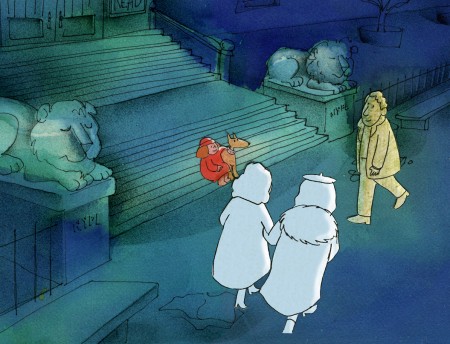
Angela sits on the library steps in The Little Match Girl

A BG from Mona Mon Amour.
___=(Click any image to enlarge.)
Daily post &SpornFilms 04 Nov 2007 08:02 am
Steig, More on MOMA and Me
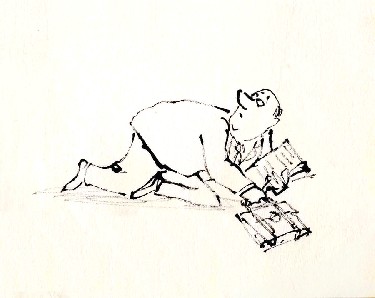 Yesterday
Yesterday
- An art exhibit of William Steig’s work opened yesterday at the Jewish Museum. It’s nice to note that Steig’s original art for Doctor DeSoto, The Amazing Bone and Abel’s Island will be on display at the same time that my films of his books will be shown at the Museum of Modern Art.
Note that art from his beautiful book, Shrek, will also be displayed. (Looking at Steig’s stunning illustrations, it’s hard to understand how such an ugly solution evolved into the films’ style.)
“The Art of William Steig” runs through March 16 at the Jewish Museum, 1109 Fifth Ave., at 92nd Street; (212) 423-3200.
Next Weekend
- It was a kick getting my regular email from MOMA – I’m a member. Labeled MoMA Film E-News, November 2-16, 2007 I expected some small mention but was surprised to find the following:
- Michael Sporn
November 9–12
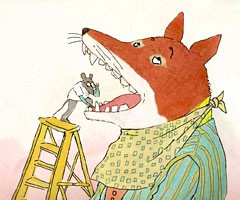 Michael Sporn has been a vital creative force in New York animation for thirty-five years. Prior to opening his independent studio in 1980, the Oscar-nominated and Emmy Award–winning producer/director worked closely with many legendary animation artists on commercials, shorts, and feature-length films. Sporn has produced a remarkably diverse range of animation, including feature film titles (Sidney Lumet’s Prince of the City), television specials (HBO’s Lyle, Lyle Crocodile), and even visuals for the Broadway stage (the 1981 musical Woman of the Year). A sensitive interpreter _____________Doctor De Soto. 1984. USA.
Michael Sporn has been a vital creative force in New York animation for thirty-five years. Prior to opening his independent studio in 1980, the Oscar-nominated and Emmy Award–winning producer/director worked closely with many legendary animation artists on commercials, shorts, and feature-length films. Sporn has produced a remarkably diverse range of animation, including feature film titles (Sidney Lumet’s Prince of the City), television specials (HBO’s Lyle, Lyle Crocodile), and even visuals for the Broadway stage (the 1981 musical Woman of the Year). A sensitive interpreter _____________Doctor De Soto. 1984. USA.
of children’s stories for the screen, Sporn has ____________Directed by Michael Sporn
carefully adapted to animation the unique styles
of storybook illustrators like William Steig, Russell Hoban, Bernard Waber, and Mordicai Gerstein. Sporn’s own production design distinguishes his adaptations of such classic tales as The Red Shoes and The Hunting of the Snark, as well as socially conscious films like Champagne.
I guess I just didn’t expect as much attention. I have to admit I love it; who wouldn’t? What I most look forward to is giving some of these films a small bit of attention. There are a few films that I do cherish, and I’m glad they’ll be projected on a big screen. Mike and Phyllis Barrier will be in town as will John and Cathy Celestri. It’s been some time, and I will be happy to see them again.
Here, again, is the complete breakdown of the shows appearing in MOMA‘s catalogue:
Friday, November 9, 6:30; Repeated Saturday, November 10, 1:30. T2
Michael Sporn Program 1: New York Stories
- Mona Mon Amour. 2001. Humorist Patti Stren looks for love in all the wrong places in this comical monologue of modern-day neuroses. 9 min.
Champagne. 1996. A moving animated documentary portrait of Champagne Saltes, a bright and sassy fourteen-year-old who lived in a convent school while her drug-addicted mother was in prison for murder. 13 min.
The Man Who Walked Between the Towers. 2005. On an iconic moment in New York history, the day in 1974 when French aerialist Philippe Petit made his death-defying tightrope walk across the towers of the not-yet-finished World Trade Center. Based on
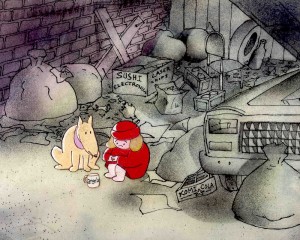 Mordicai Gerstein’s Caldecott Award-winning book and narrated by Jake Gyllenhaal. 10 min.
Mordicai Gerstein’s Caldecott Award-winning book and narrated by Jake Gyllenhaal. 10 min.Lyle, Lyle Crocodile. 1987. The comic misadventures of Bernard Waber’s beloved neighborhood reptile (in the classic children’s book The House on East 88th Street) are narrated by Tony Randall with songs by Charles Strouse (Annie). 26 min.
The Little Match Girl. 1991. Abandoned to the wintry streets of New York, a little girl inspires compassion for the homeless in this lovely rendition of the Hans Christian Andersen tale. Narrated by F. Murray Abraham. 26 min. Program 84 min.
Saturday, November 10, 3:30; Repeated Sunday, November 11, 2:45. T2
Michael Sporn Program 2: Fables
- Doctor DeSoto. 1984. An Oscar-nominated adaptation of William Steig’s classic story about a clever mouse-dentist who outwits a conniving fox. 10 min.
 Abel’s Island. 1988. A sudden gale storm whisks William Steig’s Edwardian mouse, Abelard Hassam di Chirico Flint, away from his wife and home, depositing him on a primitive, deserted island. With the voices of Tim Curry and others. 26 min.
Abel’s Island. 1988. A sudden gale storm whisks William Steig’s Edwardian mouse, Abelard Hassam di Chirico Flint, away from his wife and home, depositing him on a primitive, deserted island. With the voices of Tim Curry and others. 26 min.The Red Shoes. 1990. Using a vibrant palette, Sporn transposes Hans Christian Andersen’s touching tale to contemporary Harlem. Narrated by Ossie Davis. 26 min.
The Hunting of the Snark. 1989. Lewis Carroll’s wondrously nonsensical poem, narrated by James Earl Jones, is brought to life through a range of visual conceits and animation techniques. 19 min. Program 81 min.
Saturday, November 10, 5:30; Repeated Sunday, November 11, 4:45. T2
Michael Sporn Program 3: A Peaceable Kingdom
- Goodnight Moon. 1999. Margaret Wise Brown’s sixty-year-old book, with illustrations by Clement Hurd, has pride of place in every American child’s bedroom, and is joyously brought to the screen in this award-winning adaptation. Narrated by Susan Sarandon. 4 min.
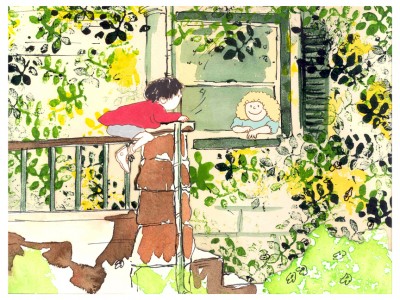 The Marzipan Pig. 1990. Based on Russell Hoban’s deeply touching fable of unrequited love involving a marzipan pig, a bee, a taxi meter, a flower, a mouse, and a clock. Narrated by Tim Curry. 26 min.
The Marzipan Pig. 1990. Based on Russell Hoban’s deeply touching fable of unrequited love involving a marzipan pig, a bee, a taxi meter, a flower, a mouse, and a clock. Narrated by Tim Curry. 26 min.The Amazing Bone. 1985. Dark adventures await Pearl, William Steig’s sweet-natured piglet, when she discovers a magical talking bone that has fallen out of a witch’s basket. 12 min.
Ira Sleeps Over. 1992. A delightful adaptation of Bernard Waber’s story about a momentous sleepover, with songs by Tony Award-winning composer William Finn. 26 min.
The Story of the Dancing Frog. 1989. A sophisticated British widow becomes the stage manager to a debonair frog, who dazzles crowds the world over with his cakewalk, polka and tap dance routines. Based on the book by Quentin Blake, narrated by Amanda Plummer. 26 min. Program 94 min.
Monday, November 12, 7:00. T2
An Evening with Michael Sporn.
- The artist in conversation with animation historian/filmmaker John Canemaker and MoMA assistant curator Joshua Siegel, illustrated with clips from his award-winning animated films, including a new short, Pab’s First Burger, and an excerpt from his feature-length work-in-progress about the life and work of Edgar Allan Poe. Sporn’s career is also traced through his commercials, public service announcements, title sequences, and visuals for the Broadway stage. Program 90 min.
Comic Art &Festivals &SpornFilms 19 Oct 2007 07:53 am
Pabs & Sad Sack & Treasures
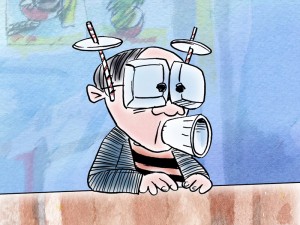 – The Heartland Film Festival opens tomorrow in Indianapolis. I have a real connection to this Festival and Jeff Sparks, the Festival Director. I’ve won their Crystal Heart Award four times in the past, and I’ve won the audience choice award once. I’ve been a judge at the Festival twice. They’re a great group of people, and they consistently put together a great program of excellent films.
– The Heartland Film Festival opens tomorrow in Indianapolis. I have a real connection to this Festival and Jeff Sparks, the Festival Director. I’ve won their Crystal Heart Award four times in the past, and I’ve won the audience choice award once. I’ve been a judge at the Festival twice. They’re a great group of people, and they consistently put together a great program of excellent films.
Starting Saturday, my new short Pabs’ First Burger will premiere, playing once at 3PM and again at 9PM. It will screen a half dozen times total. It’s on a bill with the documentary Note By Note.
I just wish I could be there to introduce it.
This short will also open the program at the Museum of Modern Art on November 12th when John Canemaker chats with me about my work. So, if you can’t make it to Indianapolis, you can see it at MOMA.
At Live Journal, there’s an interesting collection of some of George Baker‘s Sad Sack comic strips as seen in Yank Magazine during WW II.
As a kid, I had an odd grouping of comic books to read regularly. I wasn’t really into the superhero strips, I appreciated more the cartoon strips. Naturally, I bought Carl Barks’ Donald Duck; they had the best stories and some great artwork. Little Lulu also appealed to me, and I read every issue. (Has there ever been a story on her creator, Marge?) In a pinch, I’d read Hank Ketchum’s Dennis the Menace, but I didn’t love it as much as others. When I got a little older, I read Archie.
Sad Sack was also among those comics I enjoyed. It’s interesting how a strip designed specifically for soldiers would have a life after the War. I guess the good writing and funny drawings kept it alive. Beetle Bailey popped up in 1950, and I suppose it really was nothing more than a rip off of Sad Sack. Although the drawings weren’t as funny, that strip offered enough to make it popular as well.
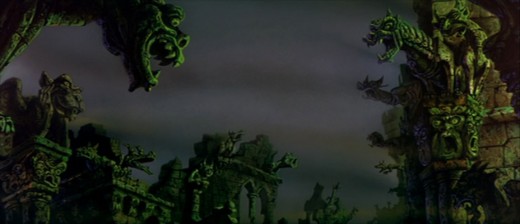
- I love the recreated background sites that Hans Bacher and Rob Richards have developed. On Animation Backgrounds, Rob has posted some backgrounds of the Witch’s Castle from Sleeping Beauty. I also really like seeing the two BGs he posted from Sword In The Stone and would love to see more from this film. 101 Dalmatians had a specific look to accomodate the new Xerographic process they were using in the cels. Sword In The Stone took another turn in its backgrounds, and I like both films.
It’s a real pleasure to visit both sites; I go there often. I can’t get enough of the Snow White BGs on Animation Treasures II.
Daily post &SpornFilms 07 Oct 2007 08:04 am
MOMA’s calling
– My big Museum of Modern Art retrospective is rapidly approaching, and plans are getting  tighter and tighter. We have a program for the shows and I thought this might be a good time to let you know what it is (especially since MOMA has just posted it on their calandar this weekend.)
tighter and tighter. We have a program for the shows and I thought this might be a good time to let you know what it is (especially since MOMA has just posted it on their calandar this weekend.)
There are three film programs starting on Friday, November 9th at 6:30PM. It continues all day Saturday at 1:30, 3:30 and 5:30. One of the Saturday shows is a repeat of Friday’s. The rest of the films repeat on Sunday at 2:45 and 4:45.
On Monday, November 12th at 7PM the programs conclude with a live chat between John Canemaker, Josh Siegel (of MOMA) and me. This program will include film clips new and old – including two new shorts we’ve just completed as well as a sample of the animatic we’ve done for our feature, POE.
Here’s the complete breakdown of the shows appearing in MOMA’s catalogue:
Friday, November 9, 6:30; Repeated Saturday, November 10, 1:30. T2
Michael Sporn Program 1: New York Stories
- Mona Mon Amour. 2001. Humorist Patti Stren looks for love in all the wrong places in this comical monologue of modern-day neuroses. 9 min.
Champagne. 1996. A moving animated documentary portrait of Champagne Saltes, a bright and sassy fourteen-year-old who lived in a convent school while her drug-addicted mother was in prison for murder. 13 min.
The Man Who Walked Between the Towers. 2005. On an iconic moment in New York history, the day in 1974 when French aerialist Philippe Petit made his death-defying tightrope walk across the towers of the not-yet-finished World Trade Center. Based on
 Mordicai Gerstein’s Caldecott Award-winning book and narrated by Jake Gyllenhaal. 10 min.
Mordicai Gerstein’s Caldecott Award-winning book and narrated by Jake Gyllenhaal. 10 min.Lyle, Lyle Crocodile. 1987. The comic misadventures of Bernard Waber’s beloved neighborhood reptile (in the classic children’s book The House on East 88th Street) are narrated by Tony Randall with songs by Charles Strouse (Annie). 26 min.
The Little Match Girl. 1991. Abandoned to the wintry streets of New York, a little girl inspires compassion for the homeless in this lovely rendition of the Hans Christian Andersen tale. Narrated by F. Murray Abraham. 26 min. Program 84 min.
Saturday, November 10, 3:30; Repeated Sunday, November 11, 2:45. T2
Michael Sporn Program 2: Fables
- Doctor DeSoto. 1984. An Oscar-nominated adaptation of William Steig’s classic story about a clever mouse-dentist who outwits a conniving fox. 10 min.
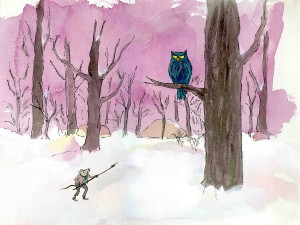 Abel’s Island. 1988. A sudden gale storm whisks William Steig’s Edwardian mouse, Abelard Hassam di Chirico Flint, away from his wife and home, depositing him on a primitive, deserted island. With the voices of Tim Curry and others. 26 min.
Abel’s Island. 1988. A sudden gale storm whisks William Steig’s Edwardian mouse, Abelard Hassam di Chirico Flint, away from his wife and home, depositing him on a primitive, deserted island. With the voices of Tim Curry and others. 26 min.The Red Shoes. 1990. Using a vibrant palette, Sporn transposes Hans Christian Andersen’s touching tale to contemporary Harlem. Narrated by Ossie Davis. 26 min.
The Hunting of the Snark. 1989. Lewis Carroll’s wondrously nonsensical poem, narrated by James Earl Jones, is brought to life through a range of visual conceits and animation techniques. 19 min. Program 81 min.
Saturday, November 10, 5:30; Repeated Sunday, November 11, 4:45. T2
Michael Sporn Program 3: A Peaceable Kingdom
- Goodnight Moon. 1999. Margaret Wise Brown’s sixty-year-old book, with illustrations by Clement Hurd, has pride of place in every American child’s bedroom, and is joyously brought to the screen in this award-winning adaptation. Narrated by Susan Sarandon. 4 min.
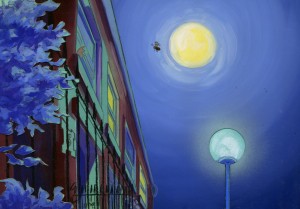 The Marzipan Pig. 1990. Based on Russell Hoban’s deeply touching fable of unrequited love involving a marzipan pig, a bee, a taxi meter, a flower, a mouse, and a clock. Narrated by Tim Curry. 26 min.
The Marzipan Pig. 1990. Based on Russell Hoban’s deeply touching fable of unrequited love involving a marzipan pig, a bee, a taxi meter, a flower, a mouse, and a clock. Narrated by Tim Curry. 26 min.The Amazing Bone. 1985. Dark adventures await Pearl, William Steig’s sweet-natured piglet, when she discovers a magical talking bone that has fallen out of a witch’s basket. 12 min.
Ira Sleeps Over. 1992. A delightful adaptation of Bernard Waber’s story about a momentous sleepover, with songs by Tony Award-winning composer William Finn. 26 min.
The Story of the Dancing Frog. 1989. A sophisticated British widow becomes the stage manager to a debonair frog, who dazzles crowds the world over with his cakewalk, polka and tap dance routines. Based on the book by Quentin Blake, narrated by Amanda Plummer. 26 min. Program 94 min.
Monday, November 12, 7:00. T2
An Evening with Michael Sporn.
- The artist in conversation with animation historian/filmmaker John Canemaker and MoMA assistant curator Joshua Siegel, illustrated with clips from his award-winning animated films, including a new short, Pab’s First Burger, and an excerpt from his feature-length work-in-progress about the life and work of Edgar Allan Poe. Sporn’s career is also traced through his commercials, public service announcements, title sequences, and visuals for the Broadway stage. Program 90 min.
Daily post &SpornFilms 23 Jul 2007 07:33 am
Annabel Lee/Searle/Mayerson & Bacher
- I talked about recording Hugh Dancy for POE, my film just getting started. I’d like to put up a bit of a poetry read. Here’s Poe, at the end of his life, reading the first half of Annabel Lee, a poem which talks about the death of his young wife, Virginia. She and Edgar were married a mere 7 years. After she burst a blood vessel in her throat, singing, their inability to buy the proper medication and afford medical help finished the job.
Annabel Lee
- Matt Jones recently wrote on my blog that he has initiated a tribute blog to Ronald Searle.
This is an excellent new site that I would suggest you visit. Searle is an inspiration as an artist and cartoonist.
As a matter of fact, Matt has a healthy blog of his own that is well worth a look. His somewhat recent sketchbook drawings of Annecy are quite impressive.
.
.
. . . (click images to enlarge.)
Mark Mayerson‘s blog is as excellent as ever. He has written a couple of posts that are must reads.
- . There are some fine comments about Ratatouille unlike others I’ve seen. If you haven’t read this and can still sit through any more about this film, read it. Mark’s written some insightful words about Brad Bird’s films.
. His breakdown of Pinocchio continues moving closer to a climax. Mark’s comments and analysis of this animated gem have to be read by anyone interested in animation.
Speaking of Ratatouille, the box office reports for this past weekend show that the film grossed another $3,360,000 for this past weekend in the U.S. This puts its total at $165,628,000 and makes it the second lowest grossing of Pixar’s films, at this point in its life. Being an excellent film is not everything for a movie; it helps financially if the audiences keep coming back.
Hans Bacher’s newish site is glorious for anyone even slightly interested in animation design and backgrounds. His relatively new site Animation-Treasures is where Hans posts reconstructions (meticulously done by using multiple frame grabs and photoshop) is a wonder.
I particularly like some of the images that Hans has created from Fantasia‘s Nutcracker Suite. It’s quite beautiful as bacground art and as something new “frame grab” art. I’ve quickly become a regular to this site.
Hans also studies films – both live action and animated – in multiple images taken from the films. Spend some time here.
Commentary &SpornFilms 28 Jun 2007 08:01 am
Monthly Abstractions
 - Jeff Scher is back in the opinion pages of the New York Times with his monthly animated contribution. The piece, this month, celebrates the Fourth of July with a confetti confection of fireworks. The short film takes its cue from Oskar Fischinger.
- Jeff Scher is back in the opinion pages of the New York Times with his monthly animated contribution. The piece, this month, celebrates the Fourth of July with a confetti confection of fireworks. The short film takes its cue from Oskar Fischinger.
The piece is designed for the TimeSelect subscribers, so it may be hard for some of you to receive it. Give it a try.
It’s an interesting gig to have to deliver an animated piece each month for the internet. Jeff’s last and initial piece is still available on line, as well. Here’s L’Eau Life. If you haven’t seen that film, check it out.
Speaking of Oskar Fischinger, I’ve linked to the Fischinger Archives. Oskar, you should know, was an important abstract animator whose most famous piece was the Toccata and Fugue in Fantasia. The archives have galleries of some of Oskar Fischinger‘s animation drawings: 2, or 3.
Above is an Oskar Fischinger silent film, “Seelische Konstruktionen,” which was set and reworked to a musical number, Cavern, by the rock group Liquid Liquid.
Richard McGuire was the bass player of the group; he’s now directing animation at Prima Linea Productions in France. He’s done a lot of work for the NYTimes Sunday Book Review and the New Yorker magazine. He’s credited for reworking Fischinger’s film to tie into the group’s song.
I did an animated video of the song in 1983, just as the group broke up. I got it onto ABC’s late night music video program at the time and a couple of local shows. The record company, 99 Records owned and operated by Ed Bahlman, went out of business not too much later. The film was screened in competition in Ottawa.
Here are some frame grabs from the video I animated. I used multiple split screens and violent cutting to make a short about the small everyday bits of violence we saw on city streets.
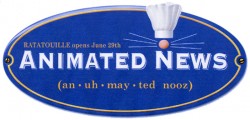
- By the way, on a completely different topic, I love the temporary logo on at Animated News. It reads, under the title banner: (an-uh-may-ted nooz). Hilarious stuff.
The logo links to the Pixar Ratatouille site.
Commentary &SpornFilms 19 Jun 2007 08:00 am
Show and Tell

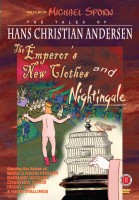 – Tomorrow, Wednesday, ASIFA East will have a program built around the two dvds we have in release this coming week.
– Tomorrow, Wednesday, ASIFA East will have a program built around the two dvds we have in release this coming week.
We’ll show clips from the four films featured on the dvds as well as a bit of the documentaries made for the discs. Masako Kanayama, Jason McDonald, Ray Kosarin and Stephen MacQuignon, all of whom were among those who helped make the films, will join me on the the stage to talk about the energetic little studio we had at the time that made the films in a very short period.
We’ll view the art styles that went into making the shorts and the various techniques we used in the making. I’ll bring some of the art to demonstrate.
If you’re in the New York area, I encourage you to join us for the evening. It’s free.
School Of Visual Arts
209 East 23rd Street
(Bet. 2nd & 3rd Ave)
5th Fl, Rm 502
7 PM
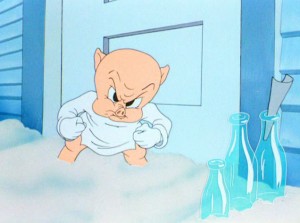 A post I enjoyed this last week appeared on Eddie Fitzgerald‘s Uncle Eddie’s Theory Corner.
A post I enjoyed this last week appeared on Eddie Fitzgerald‘s Uncle Eddie’s Theory Corner.
The thesis Eddie presented is that inbetweens should be more integral to the animated extremes than mere inbetweens. Exact inbetweens of an animator’s work is essentially artless. A close breakdown of a great example, Rod Scribner‘s scene from Bob Clampett‘s Porky Pig short, Kitty Cornered, is given.
The problems occur (as many of those who commented on Eddie’s site stated) when an inbetweener – generally someone relatively new to the profession – is given free reign on an animator’s scene.
At Raggedy Ann, where I supervised NY’s assistants and inbetweeners, we had one novice erase Jack Schnerk’s roughs because she didn’t like the way they looked. The she repaired them and started inbetweening. Fortunately, we were able to reconstruct Jack’s scene and have the scene re-inbetweened.
At Fleischer’s studio in the thirties, for the first weeks of the job, inbetweeners were made to draw exact halves between two lines. Over and over and over and over and over.
Rod Scribner obviously had similar working methods that I was taught by Tissa David. Both qualify as straight-ahead animators. (This was initially the reasoning given for the rift between Ub Iwerks and Walt Disney that ultimately led to their early split.)
For those who don’t quite understand what I’m talking about, an Inbetweener by definition is hired to put missing drawings between two extreme drawings. An animator does drawings #1 & #5. The inbetweener draws #3, then inbetweens #2 and #4. A straight ahead animator would start with drawing #1 then continue forward until completion.
In fact, David and probably Scribner are more an amalgam of straight-ahead AND inbetween.
Tissa hates leaving drawings for an inbetween unless the process is forced on her or there is just too little time. However, working straight-ahead allows strange things to happen to the characters you’re animating. Going from drawing #1 to #2 to #3 etc. the drawings will subtly shift in shape until you can end with something very different by the time you reach the final drawing. Tissa tells the story of a dance scene where the character grew almost twice in size by the time she finished it. She then had to go back and redraw the entire scene, correctly sizing it.
She does very rough roughs for herself blocking the scene, leaving a large number of inbetweens. She then goes back and reworks the entire scene of completely new drawings (not clean-ups of her roughs) working straight-ahead UNLESS there are obviously mechanical inbetweens required. Then she’ll go back to do those inbetweens herself or hand them down to an assistant if available.
I assume Rod Scribner used a similar method. The drawings are too tight, especially the extremes for them to be otherwise. I wonder if there is a way to get inbetweeners to do the special inbetweens that Eddie longs for?
Certainly, they couldn’t be neophytes to animation, but would it make sense for anything less than an excellent assistant?
In my studio, I’ve tried to allow animators to work the way they like. They can work from the loosest of materials (sometimes just the rough storyboards we do) or the most exact of layout. I love it when animators do their own inbetweens, but some of my best animators over the years have required an assistant and an inbetweener. Doug Compton did some brilliant work with enormous vitality, and he definitely works with an inbetweener or five. John Dilworth, on my films, did some of the finest, most insightful character animation drawing his own inbetweens. Both of these guys are, now, excellent directors in their own right, both have similar but different methods of animation.
Eddie Fizgerald ‘s post has been quite thought provoking for me; I encourage you to take a look. Seeing the inbetween poses of that Porky scene is quite revealing. I may continue this with examples of my own. I know, for example, that Jim Tyer left inbetweens but it sure looks like he didn’t. Both Tyer and Scribner often did a more extreme kind of movement. I’m interested in the animators that worked a bit more quietly and did more interesting and expressive inbetweens themselves.
SpornFilms 18 May 2007 07:30 am
Poor Hans
 – One of the centerpieces of tourism in Copenhagen, the statue of the Little Mermaid, was once again vandalised.
– One of the centerpieces of tourism in Copenhagen, the statue of the Little Mermaid, was once again vandalised.
The statue was commissioned in 1909 by Carl Jacobsen after his love for a balletic version of the fairytale. The sculptor and creator of the statue was Edward Eriksen, which he unveiled in August 1913.
Eriksen used his wife as the model.
In April 1964 some politically motivated artists sawed off the head, and a new one had to be sculpted and attached. In 1984, an arm was sawn off and returned two days later by the vandals. In 1990 another attempt to cut off her head failed, and the statue ended with a deep cut in her neck.
In January 1998, her head was cut off again but was returned to a television station and was reattached to the sculpture.
This time varmints just poured red paint on her. This is the eighth time the statue has been doused with paint. It’s hard for a mermaid to survive above water.
- This is as good a place as any to note that I have two upcoming dvd releases available on the 19th of June. Each of the two will contain two programs of Han Christian Andersen tales we’d produced about ten years ago.

 One will include The Red Shoes and The Little Match Girl; the second will contain The Emperor’s New Clothes and Nightingale. Both dvds will also feature galleries of additional art and storyboards, an animatic of a section of the films, and a documentary about the making of the films.
One will include The Red Shoes and The Little Match Girl; the second will contain The Emperor’s New Clothes and Nightingale. Both dvds will also feature galleries of additional art and storyboards, an animatic of a section of the films, and a documentary about the making of the films.
It’s a relatively full program for these films that hadn’t yet been released on dvd, and I’m proud of the final products. I am enormously grateful to the distributor, First Run Features, who are treating my work as if it’s a big deal not just another kiddie program.
There will also be an ASIFA East program on June 20th to highlight these dvds, and I hope to show a program of some of the material. Maybe we can put together something interesting.
Music &SpornFilms 12 May 2007 08:43 am
Ernest’s Tadpole
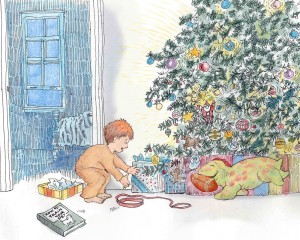 – The Mysterious Tadpole was another of the films I’ve done for Weston Woods which was also scored by Ernest Troost.
– The Mysterious Tadpole was another of the films I’ve done for Weston Woods which was also scored by Ernest Troost.
In 1984 Doctor DeSoto was nominated for the Oscar. For a full year from the date of the announcement I was without work except for one job from Weston.
The Mysterious Tadpole had a budget which totaled about $15000. That was it for the year. So much for the glory. The budget was such that I had to do the entire film with help from only Bridget Thorne, who helped render the artwork and prepare it all for camera.
As a result, I got particularly close to this film. When it came time for the music, I had formed a lot of specific ideas. I’d thought about it a bit too much. This made the job for Ernest particularly difficult; I was going to be hard to please.
When the music arrived it sounded completely different from what I’d expected. This was in the days before synthesized music, so the only way I’d heard it played was on a piano. It was a complete surprise to hear those final tapes. The orchestration was not what I’d heard in my head, and I’m afraid my disappointment was obvious.
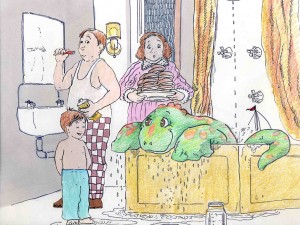 After spending a bit of time placing the music into the film with Paul Gagne, who was co-producing the film and editing it, I started to warm to the score. By the time I’d heard it in place and watched the film with its score two or three more times, I’d fallen in love with what Ernest had done. My ideas were so simple, and he had done something complex.
After spending a bit of time placing the music into the film with Paul Gagne, who was co-producing the film and editing it, I started to warm to the score. By the time I’d heard it in place and watched the film with its score two or three more times, I’d fallen in love with what Ernest had done. My ideas were so simple, and he had done something complex.
That was a lesson to learn. When you’re working with someone whose talent you respect, trust that person. So often when hearing music for my films or when hearing an actor reading the script, I’ve had a surprise jolt getting something completely unanticipated. I have to say 90% of the time I’ve immediately recognized it’s positive. That other 10% of the time it’s often just an attitude adjustment I’ve had to make.
That’s not to say that there aren’t those times when I know it doesn’t work as well as it might have, but that doesn’t happen too often if I’m working with people whose talent I respect.
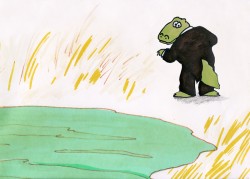 – Continuing to look at a couple of Sesame Street spots Ernest Troost scored for me, my favorite, by far, is Crocodile Smiles. This was done in 1981. Edith Zornow was the producer of animation at Sesame Street, and I saw her as my guardian angel. (I’ve said that before.) She always seemed to show up just when things seemed bleakest. The first three spots I did for her included this film and it really sold me on Ernest’s work.
– Continuing to look at a couple of Sesame Street spots Ernest Troost scored for me, my favorite, by far, is Crocodile Smiles. This was done in 1981. Edith Zornow was the producer of animation at Sesame Street, and I saw her as my guardian angel. (I’ve said that before.) She always seemed to show up just when things seemed bleakest. The first three spots I did for her included this film and it really sold me on Ernest’s work.
I wanted opera, and he gave me more – cartoon opera. It really feels like this group would be playing in some 30′s cartoon. Again, the budgets for Sesame Street was always low. These two films had about $5000 total for everything from script/board to completion.
This film is available on YouTube, but I don’t like the resolution of that copy, so I’ve put it up here as a QT movie.
The Stranger was done a couple of years later. This is from one of the last films we did for Edith Zornow. She died soon after of Parkinson’s Disease. Since my father was also suffering from the disease at the same time, I was comfortable with it, though she seemed obviously uncomfortable. It didn’t stop her from going on right to the end.
